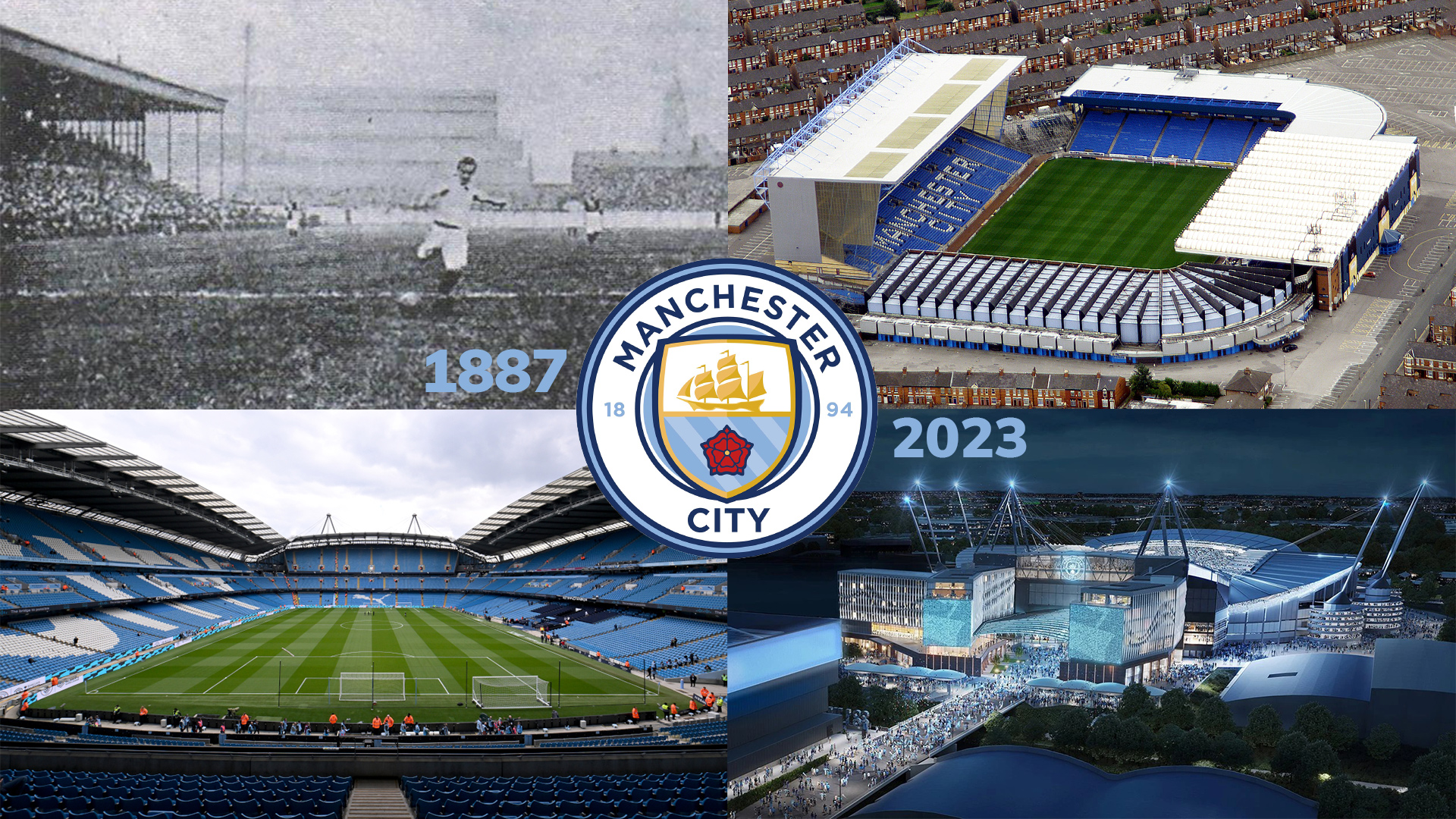In this article we will take a deep dive into all previous stadiums that Manchester City have called home.
Hyde Road (1887-1923)

From the club’s humble beginning in 1880, Manchester City – who were first known as St Mark’s (West Gorton), then as West Gorton A.F.C, and later as Ardwick Association F.C, had struggled to find a home ground to base themselves.
That place to call home eventually came in the form of Hyde Road Stadium – which holds a significant place in the history of Manchester City Football Club. The stadium, located in West Gorton, Manchester, served as the club’s home ground from 1887 to 1923. Although it has been long gone, its legacy and memories still resonate with fans and football enthusiasts.
Hyde Road Stadium had a modest beginning, with a capacity of around 12,000 spectators. As Manchester City gained popularity and success, the stadium underwent several expansions, ultimately accommodating up to 40,000 fans. It had a distinctive main stand that became an iconic feature, with a clock above it, famously known as the “Time-Keeping End.” The stadium’s atmosphere was electric, with passionate fans creating an unforgettable ambiance.
However, tragedy struck in 1920 when a wooden stand at the stadium caught fire during a match against Liverpool. The incident resulted in the loss of lives and led to extensive damage to the ground. Manchester City was forced to seek an alternative venue for their matches until a new stadium could be built.
In 1923, Manchester City bid farewell to Hyde Road Stadium as they moved to their new home, Maine Road. Hyde Road Stadium was eventually demolished, making way for residential development.
Maine Road (1923 – 2003)

Following the move from Hyde Road, Manchester City took residence at Maine Road, a stadium that they called home between 1923 and 2003.
Situated in Moss Side, Manchester, Maine Road became an iconic symbol of Manchester City’s heritage. It started with a capacity of around 35,150 spectators, but over the years, it underwent numerous expansions to accommodate the growing fan base. The stadium boasted an imposing main stand known as the “Kippax Stand,” which became synonymous with the club’s fervent supporters.
Maine Road Stadium witnessed many historic matches and triumphs for Manchester City. It was the stage for the club’s first-ever top-flight league title in 1937 and was the setting for numerous local derbies against rivals Manchester United. The atmosphere generated by the passionate fans was legendary, creating an electric and intimidating environment for visiting teams.
As the years went by, the stadium underwent modernizations to meet the evolving demands of the game. However, the aging infrastructure eventually necessitated a move to a new home. In 2003, Manchester City bid a bittersweet farewell to Maine Road as they relocated to the state-of-the-art Etihad Stadium.
Although Maine Road was demolished to make way for residential development, its legacy lives on in the hearts of Manchester City supporters.
Etihad Stadium (2003- present)

The Etihad Stadium, formerly known as the City of Manchester Stadium, is a state-of-the-art sporting and entertainment venue that has become an integral part of Manchester City Football Club’s identity – and the place that they currently call home.
Located in the east of Manchester, the stadium has left an indelible mark on the city’s skyline since its opening in 2002, when it opened as an athletics stadium to host the 2002 Commonwealth Games. It was then converted into a football stadium to become the home of Manchester City in 2003. In 2015 A third tier was added to the south stand increasing the capacity to 56,000.
Etihad Stadium offers a world-class experience for both football matches and other events. It has witnessed numerous memorable moments in Manchester City’s history, including title-clinching victories and thrilling European nights.
In April 2023 the club announced the expansion that would bring the capacity of the ground to around 60,000.



